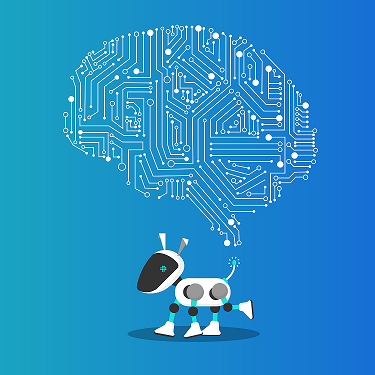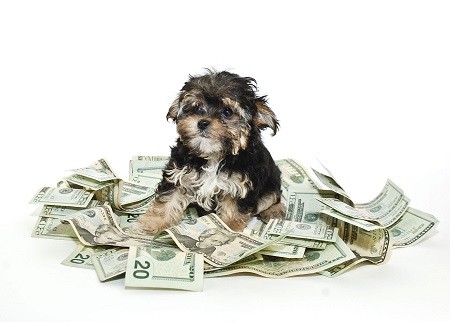Overview of the Pet Food Industry
Pet food makes up the largest category in the pet market. In the US, $30 billion was spent on pet food in 2018. This amount represents approximately 40% of the amount US consumers spent on pets.
Worldwide, pet food sales hit $91 billion in 2018. This was 73% of the estimated $125 billion spent on pets globally. Current projections show that the global food market should grow at a rate of 6 – 7% annually and reach a market value of more than $128 billion by 2022.
Largest Pet Food Companies
The biggest players in the global pet food industry include:
- Mars Petcare: The largest pet food company in the world. The company generated revenue of $18 billion in 2019, although some of this revenue came from non-pet food sales. The company’s pet food brands include IAMS, Pedigree, Royal Canin, Sheba, Cesar and Whiskas. In addition to pet food, the company has a network of over 2,000 pet hospitals (VCA and Banfield) and owns the Whistle smart pet tracker and the Wisdom Panel pet DNA company. Mars Petcare is a division of Mars, Incorporated, the 6th largest privately held company in the US, with revenue of $33 billion.
- Nestle Purina Petcare: The second-largest pet food company in the world. The company generated revenue of $14 billion in 2018. Brands include ALPO, Friskies, Purina and Fancy Feast pet foods and Tidy Cats litter. Nestle Purina is a subsidiary of Nestle, a Swiss multinational food and drink conglomerate, that is the largest food company in the world. Although Nestle Purina is the second-largest pet food company globally, it sells more pet food in the US than Mars Petcare.
- J.M Smucker: Another big player in the pet food industry, J.M Smucker sold about $2.8 billion in pet food in 2018. Brands include Meow Mix, Kibbles ‘n Bits and Rachel Ray’s Nutrish. The Ohio-based business is an S&P 500 food company, with total annual revenue of $7.3 billion.
- Hill’s Pet Nutrition: This Kansas-based company has established a strong presence in the pet food industry by developing lines of dog and cat food available only through a vet or pet pharmacy. Hill’s Pet Nutrition has an annual revenue of about $2.3 billion, representing a market share of about 5.5%. The company is a subsidiary of Colgate-Palmolive, a consumer products conglomerate with annual sales of over $15 billion.
- Diamond Pet Foods: This company rakes in annual revenue of about $1.5 billion. The Missouri-based company is privately-owned and was founded in 1970 by brothers-in-law Gary Schell and Richard Kampeter.
- General Mills: Entered the pet industry in 2018 by paying $8 billion to acquire Blue Buffalo pet food. The publicly traded General Mills is known primarily for its US consumer food brands such as Betty Crocker, Yoplait, Pillsbury and Haagen-Dazs. The company had $15.7 billion in overall revenue in 2018, with sales of Blue Buffalo reaching $1.3 billion.
European Pet Food Companies
Although many of the largest companies in the food industry market are from the United States, some of the other big players are in Europe.
These companies include:
- Deuerer: This German-based pet food company makes an annual revenue of $720 million. It is one of the largest pet food companies in Europe.
- Heristor AG: This pet food company is also in Germany. It has an annual revenue of $700 million.
- Affinity Petcare SA: This Spain-based pet food corporation has an annual revenue of about $560 million.
- InVivo Animal Nutrition and Health: This French-based company rakes in annual revenue of about $516 million.
- C&D Foods: This company operates in Ireland. It has an annual revenue of $413 million.
Europe ranks second in sales for the global pet food industry.
Trends in the Pet Food Industry
The steady growth of the global pet food industry is being driven by a few trends. The first trend is the rising number of nuclear families. As more and more people decide to settle down as a family, they are more likely to adopt one or two pets along the way. Pets are also treated as part of the family. For this reason, many pet owners have demanded better quality foods for their pets.
Another trend in the pet food industry is the use of technology. Pet owners can now order their pet food online. This has steadily increased pet food sales and has made it easy for companies to sell their products directly.
The technology has also led to the search for new protein sources that are easier to consume. This has made it easy for companies to identify food types that are unsuitable for various pets. For instance, many companies are not using wheat or corn because they may cause an allergic reaction in some pets.
The introduction of freeze-dried pet foods is another trend that has had a huge impact on the pet food industry. This type of food is easy to prepare and saves time, which is great for pet owners who may be too busy to cook for their pets. This is part of the growing culture of humanizing pets and giving them great care.
Pets have also become very differentiated so has their food. This has made it necessary for companies to develop foods based on the pet’s size, weight, breed, and health. Pet owners are more aware of their pet’s needs, which has increased the consumption of pet foods.
Statistics About the Global and European Pet Food Market
The European pet food market has been doing very well. This is due to the fact that 5 of the top pet food companies had annual revenue of more than $400 million. The companies record such high profits because there are more than 75 million households in Europe that own a pet. The annual turnover of the pet food industry in Europe is $16 billion. The pet food market in Europe will grow at a rate of about 4.8% between 2019-2024.
The pet food market in Asia is also doing quite well. The largest pet food market, Unicharm Corp, reports annual revenue of about $750 million. The Asian pet food market can grow at a rate of 3.09% between 2020-2026.
South America’s pet food industry has also grown tremendously. For instance, the pet food market in Brazil alone has sales of approximately $1 billion. The total value of the pet food market in South America is about $8.3 billion. This figure will reach more than $11.7 billion by 2023. Argentina is the second-largest producer of pet food in South America. Furthermore, 81% of all pet care products were food sales with 46% being dog food while 35% was cat food.
Pet Food Industry
The current projections show that the global pet food industry will continue to grow. One of the reasons for this is that pets have become a part of any family that adopts them. Having pets is very therapeutic as animals are a great source of companionship. So, if you’re feeling lonely or you simply want to give your kids a very good friend, get a pet.
Related article: 5 Sustainable Pet Food Companies
| My Dog is a Robot covers the pet technology industry. Keep up with the latest news about products, services and companies in the pet tech space. | Contact Us |



